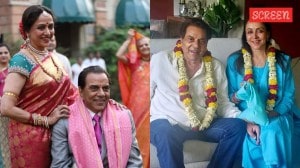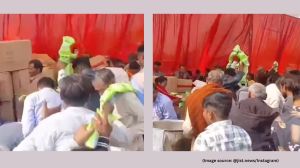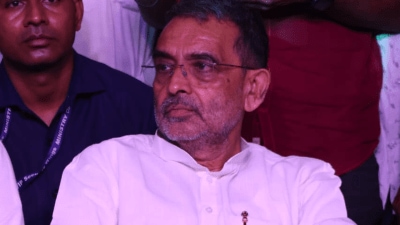A set of newly declassified White House tapes reveal in stark detail President Richard Nixon’s deep antipathy towards India and Indians, which, fanned by his National Security Adviser Henry Kissinger, determined United States policy towards New Delhi in the early 1970s.
At a meeting with a group of senior officials in the Oval Office on June 17, 1971, Nixon disparaged Indian women as the “most unattractive women in the world”, and Indians as the “most sexless” and “pathetic” people.

Kissinger called Indians “superb flatterers” whose “great skill” was to “suck up to people in key positions”.
Contents of the new tapes, which were released in batches up to May this year, were reported by Prof Gary J Bass of Princeton University in an opinion piece in The New York Times on Friday. Bass had filed a legal request for their declassification.
Explained | US Presidential Elections: In Trump 2020, Nixon 1968 echo
As a deeply polarised US heads into a presidential election that has been compared with the one in 1968 — which saw Nixon successfully exploit the racial anxiety of white Americans in the wake of widespread urban riots — the tapes draw a line between the personal racism of a President and its reflection in his attitudes towards international events and actors.
The June 17, 1971 meeting, held between 5.15 pm and 6.10 pm, was captured by the Oval Office taping system, and appears as Conversation 525-001 of the White House Tapes.
Towards the 50th minute of the 54-minute, 42-second tape, Nixon says: “Undoubtedly the most unattractive women in the world are the Indian women. Undoubtedly.”
Story continues below this ad
He continues: “The most sexless, nothing, these people. I mean, people say, what about the Black Africans? Well, you can see something, the vitality there, I mean they have a little animal-like charm, but God, those Indians, ack, pathetic. Uch.” As he says this, there is laughter.
The new tapes provide further evidence of Nixon’s well known hostility towards India and his soft spot for Pakistan, which led him to look away from the genocide by the Pakistani army against the Bengali people in what was then East Pakistan.
Bass, a professor of politics and international affairs at Princeton, had detailed the Nixon administration’s attitude and actions in his 2013 book, The Blood Telegram: Nixon, Kissinger, and a Forgotten Genocide.
Also in Explained | What is the Hatch Act, which Donald Trump has been accused of violating?
Story continues below this ad
In an email response to The Indian Express on Friday, Bass pointed to a section of the book, in which he had outlined the origins of Nixon’s attitude towards India and Indians. The reasons, according to the book, were many – including India’s policy of non-alignment, and its “suspiciously good terms with the Soviet Union”.
“Nixon’s anti-Indian leanings had been reinforced when John F Kennedy took a warmly pro-India line,” Bass wrote in the book. “On top of that, there was a mutual loathing between Nixon and Indira Gandhi”. And, finally, there was the friendship between him and Pakistan’s then President General Agha Muhammad Yahya Khan, who was acting as his go-between with China.
Nixon and Kissinger had deep misgivings about then US Ambassador to India Kenneth B Keating, who had, much to the dislike of the President and the National Security Adviser, briefed them on the atrocities committed by Pakistan on the Bengalis.
On the tape, as Nixon wonders why Keating was on the side of the Indians, Kissinger says: “They are superb flatterers, Mr President. They are masters at flattery. They are masters at subtle flattery. That’s how they survived 600 years. They suck up — their great skill is to suck up to people in key positions.”
Story continues below this ad
In The Blood Telegram, Bass wrote about the President and his Ambassador to India:
“Nixon made a brief effort to speak nicely of the Indians. It did not go well. ‘Let me say this,’ he intoned, ‘I don’t want to give you the wrong impression about India. There are 400 million Indians.’ Keating corrected him; there were actually 550 million Indians. Nixon was surprised: ‘I don’t know why the hell anybody would reproduce in that damn country but they do.’ Trying to revert to kindness, he said that India had ‘some semblance of democracy’ and that ‘we want them to succeed. Because there are 550 million people, we want them to do well.’ Then, as if overtaxed by that niceness, he added, ‘And they always hate us… internationally, we know that’.”
In another passage in the book, Bass wrote: “Nixon bitterly said, ‘The Indians need — what they need really is a—,’ Kissinger interjected, ‘They’re such bastards.’ Nixon finished his thought: ‘A mass famine.’”
Instances and comments like these were common in Nixon’s conversations about India, and the new tapes show a visceral hatred towards Indians. Bass, who has accessed these tapes, found that many still had long bleeps.
Story continues below this ad
In December 2012, Bass had filed a legal request for a mandatory declassification review with the Richard Nixon Presidential Library and Museum. After much delay, the Nixon library released a few unbleeped tapes in May 2018 and July 2019, then 28 more in batches from October 2019 to May 2020.









